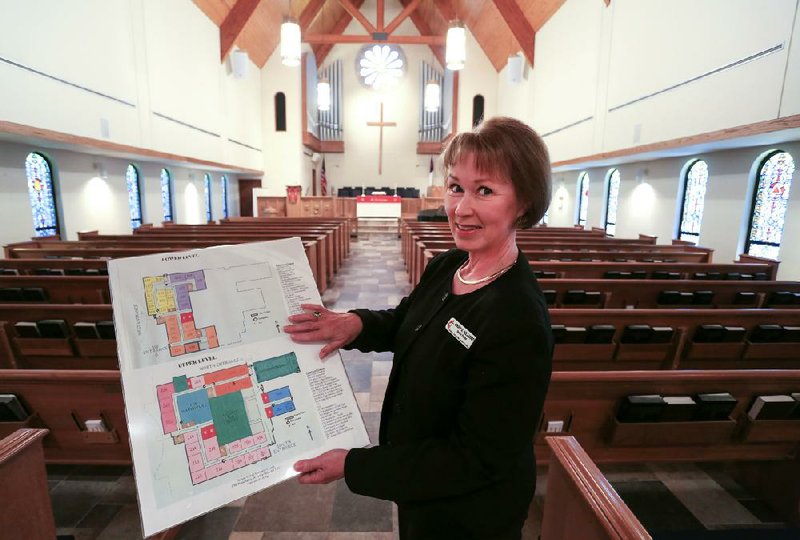Toward the end of worship services at Asbury United Methodist Church on Aug. 10, the fire alarm sounded. Instead of a panicked rush to escape, almost 200 worshippers quickly exited via predetermined routes and met up again outside.
There was no fire. This was a drill.
About 140 worshippers at the Little Rock church had already participated in another successful drill at the end of the early service. This time, worshippers in the sanctuary and activities center as well as infants and children completed the drill in less than two minutes.
The evacuation plan developed by the congregation, with help from the Little Rock Fire Department, was a success.
Common in public schools, fire drills are far less common in churches. But the Rev. Mary Hilliard, senior pastor at Asbury, had become convinced her congregation needed to develop a plan of action after church fires across the state. Within the United Methodist Church alone, fire has damaged or destroyed several churches in recent years, including Living Waters United Methodist Church in Centerton, Hickory Plains United Methodist Church in Carlisle and New Haven United Methodist Church in Hensley.
Hilliard had also experienced fire firsthand.
"When I was 19, I was in a house fire," she said. "It was not our home. I was visiting someone and was awakened in the middle of the night, so I think it's very important to be proactive in these matters."
The church staff met with personnel from the fire department, learned about fire safety and developed an evacuation plan.
"We knew we needed to be as educated as possible," Hilliard said.
She also knew that an evacuation plan would have to account for infants and children, as well as elderly worshippers, a few of whom rely on walkers to get around. Worship services are held in the sanctuary and the activities center, and children and infants are in the nursery and Sunday School classes on Sunday mornings, so exit plans were developed and posted in each area.
The staff then let the congregation know about the coming fire drill and which route to take based on where they would be sitting in the sanctuary or the activities center. They also explained evacuation procedures for the children, who would be under the care of trained staff members. Ushers had also been trained to assist those who are handicapped or would need assistance quickly exiting. Those using walkers would be helped into wheelchairs and escorted out.
"We designated outside depots where the children would be picked up outside," Hilliard said. "The normal instinct would be for any parent to just rush to the nursery and get their child, but we wanted them to be assured that the staff was trained."
Todd Burris, treasurer of the Arkansas Conference of the United Methodist Church, said he hasn't seen many churches have a fire drill for worshippers. Churches that operate child-care centers during the week have emergency drills, but what Asbury did is unusual, he said.
"I think it's a great way to raise awareness," Burris said, adding that even if churches opt not to do an actual drill, developing a plan of action is important. "I think making sure you have a plan and at least your leaders -- the ones with the microphones -- know what the plan is and can enact that quickly and get the crowd under control is a necessity."
Burris said simply pointing out exits at the start of service can help, especially in churches that have several interconnected buildings that can be confusing for visitors.
On the day of the fire drills at Asbury, as the service drew to a close, Hilliard had a little fun with the benediction, saying, "Now go in the fire of the spirit."
Then the alarm blared and the congregation filed out.
"After it was over, there was a lot of fellowship," Hilliard said. "People just kept talking."
She said the staff learned a lot while working on developing the fire safety plan, including several areas that needed improvement. While walking through the facility with fire personnel, she said, the staff realized with alarm that although they passed by the fire extinguishers frequently, they couldn't remember exactly where they all were.
"As a staff we lead our congregation so we obviously need to be very aware of that and we are," she said.
Now every room has an evacuation map that shows exit routes, as well as extinguisher locations. The staff is trained and the congregation ready in case a real fire escape is necessary.
"We felt very good about this," Hilliard said. "We felt it was an important thing to do."
But they aren't stopping with just fire drills. Next up? Developing a tornado drill.
Religion on 08/23/2014
